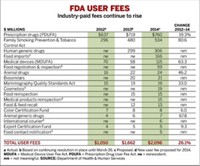Advertisement
Grab your lab coat. Let's get started
Welcome!
Welcome!
Create an account below to get 6 C&EN articles per month, receive newsletters and more - all free.
It seems this is your first time logging in online. Please enter the following information to continue.
As an ACS member you automatically get access to this site. All we need is few more details to create your reading experience.
Not you? Sign in with a different account.
Not you? Sign in with a different account.
ERROR 1
ERROR 1
ERROR 2
ERROR 2
ERROR 2
ERROR 2
ERROR 2
Password and Confirm password must match.
If you have an ACS member number, please enter it here so we can link this account to your membership. (optional)
ERROR 2
ACS values your privacy. By submitting your information, you are gaining access to C&EN and subscribing to our weekly newsletter. We use the information you provide to make your reading experience better, and we will never sell your data to third party members.
Environment
Fostering Innovation In Health Care
Health economist views information technology as key to innovation in health care
by Corinne A. Marasco
June 19, 2006

Jane Sarasohn-Kahn has a grand vision for the future of health care: personalized medicine and theragnostics. By theragnostics she means a combination of diagnostics and therapeutics that tailors treatments for individual patients on the basis of their genetic profiles. As a forecaster, she is quick to point out the barriers that could prevent us from reaching that nirvana.
For Sarasohn-Kahn, a management consultant and health economist, the answer lies in the interplay between science and economics. "In the short run, I'm not optimistic about our national funding of science," she says. "From a public health standpoint, it's an unhappy scenario because the next president will inherit a legacy left by the Bush Administration, which has emphasized defense spending over civilian spending on domestic issues."
"I'm hopeful that small pharmaceutical and biotech companies can move quickly to address some of the bigger questions, such as HIV, cancer, and Parkinson's," she says. "Big pharma is still stuck in a direct-to-consumer blockbuster-marketing mode, which isn't sustainable." Sarasohn-Kahn points to a recent Forbes.com story that describes how the emphasis of marketing over research has negatively affected pharmaceutical pipelines.
Then there is the question of health care costs and innovation as the baby boomers start to retire. "You only have to pick up the GM annual report to see their legacy of health care for retirees costing more than what they spend on steel and hardware for their cars," she says. "Baby boomers will have to have at least $250,000 to pay for health care in retirement and at least $500,000 for multiple morbidities, according to the Employee Benefit Research Institute. That is a huge extra nest egg that most boomers haven't planned for."
Sarasohn-Kahn says she's encouraged by the emergence of information technology applications in health care, such as IBM's joint project with the Mayo Clinic in St. Paul, Minn., to use IBM's BlueGene supercomputer to mine medical records and look for patterns in disease states, even at the genetic level, if that information is available. "These are places where we look to jump over obstacles," she says.
"Investing in IT in health care is going to help. It's not a panacea, but it will speed discovery and identify successes more quickly so we can disseminate these products to those individuals who are most suited for them. This will bring us closer to individualized medicine."
Sarasohn-Kahn is cautiously optimistic that IT is going to be a major contributor to future health care innovations. Efforts are under way to make electronic medical records common by 2014. The initiative, announced by President Bush in 2004, would give doctors electronic access to patients' full medical records and history.
She adds, however, that there will not be a single way to convert medical records to electronic format "because in the U.S., we see a single anything as anathema. We want competition among vendors, but the very nature of our fragmented health care system translates into fragmented electronic medical records. People have been talking about this for years, but we need to agree to standards, and soon."
She continues, "I can see a time when a Microsoft or an Intel gets into health care delivery or drug discovery. There are possible synergies, for example, if a part of IBM comes together with a part of Roche or a small biotech. If they're under the same roof, you don't have the arguments about what systems or standards to use. We'd have to see some loosening of the antitrust laws to enable those marriages to happen."
As the baby boomers retire, the system will change because they will demand changes and are willing to pay for services that insurance won't cover. "There will be some out-of-pocket payment for the newest cancer treatment if we want it," she says, "or an expensive drug that a formulary has put under co-insurance. However, not many people have the ability to pay, and that's a limiting factor on how fast innovation can spread."




Join the conversation
Contact the reporter
Submit a Letter to the Editor for publication
Engage with us on Twitter